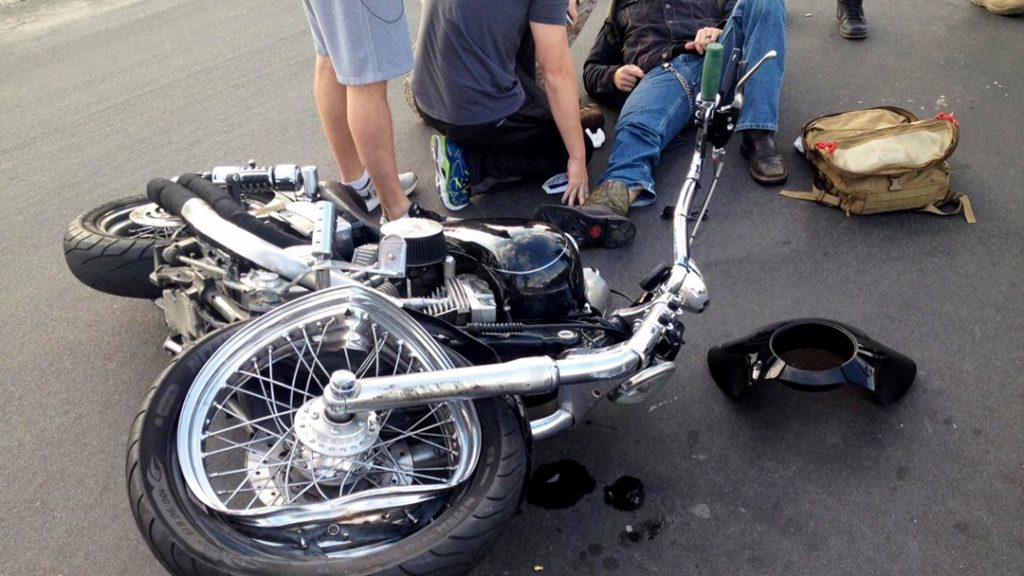
6 Next Steps if You’re Involved in a Bicycle Accident
What Should You Do After a Bike Accident?
Riding a bicycle in the city offers a sense of freedom, but with it comes the risk of accidents. No matter how cautious a cyclist you might be, unforeseen incidents can occur. So, if you ever find yourself in the aftermath of a bike accident, knowing the correct course of action is crucial.
This blog post outlines six crucial steps to take post-accident, ensuring your safety, protecting your rights, and positioning you for the best possible outcome. Whether you’re a daily commuter or an occasional rider, being equipped with this knowledge can make all the difference. Let’s guide you through what to do next.
What Should You Do After a Bike Accident? 6 Next Steps To Consider
Following a bike accident, prioritize your safety by calling the police immediately, documenting the accident area, securing witnesses, exchanging contact information with the affected parties, and seeing a personal injury lawyer.
As much as you love the thrill of the open road, you need to be ready for any situation. Understanding what you do after an accident is critical to your health, public safety, and legal rights. These measures assist guide you through the early aftermath, from assessing for head and foot injuries to ensuring a comprehensive case review.
Being responsible about how you handle an accident helps not only your own recovery, but also the cycling community as a whole. By taking these steps, you not only protect yourself, but you also show other users how to do it right. It shows a commitment to safety and responsibility and reminds everyone that mistakes happen, but they don’t have to cause chaos. Preparedness and knowing what to do could make a big difference, changing possible mistakes into lessons that will help you ride better and safer in the future.
New York State Bike Laws and Regulations
In New York, understanding bike laws and regulations is important, especially if involved in an accident.
The state’s No-Fault Law, introduced in the 1970s, ensures that victims of a crash receive compensation for medical bills and lost earnings, irrespective of fault. Notably, this No-Fault claim is separate from a bodily injury claim. While the former covers economic losses up to $50,000, including medical expenses and lost wages, the latter allows for lawsuits against those responsible for injuries and pain.
Eligibility for No-Fault benefits extends to cyclists, pedestrians, drivers, and passengers injured by motor vehicles registered and insured in New York. However, motorcyclists and those injured while intoxicated are among the exclusions.
Filing for No-Fault claims can be tricky, with strict deadlines and meticulous form submissions. A minor mistake can lead to claim denial. Thus, awareness of these regulations is paramount, especially for cyclists navigating the busy streets of New York.
In the following sections, we’ll delve deeper into the steps on what to do after a bike accident, offering detailed guidance on each to ensure you’re well-prepared and informed.
1. Safety First
If you are not severely injured, quickly move to safety to avoid further danger or injury. But if you are in pain and cannot move, get someone’s attention and have them call for an ambulance. You will want to get to a hospital for quick medical attention.
Bike accidents, regardless of how minor they might appear, can lead to a variety of injuries. Some common injuries sustained include:
- Concussion: A type of traumatic brain injury caused by a blow, bump, or jolt to the head, which can alter the way your brain functions.
- Road rash: A skin abrasion that occurs when a cyclist slides across the pavement, often leading to raw skin and potential infections if not treated properly.
- Broken bones: Fractures that can vary in severity, from minor cracks to bones breaking into multiple pieces, typically requiring immobilization or surgery.
- Sprains and strains: Injuries to the ligaments (sprains) or muscles and tendons (strains) that can range from mild stretches to complete tears.
- Contusions and bruises: Caused by blunt force trauma, these are discolored spots on the skin where blood vessels have broken, but the skin remains intact.
Recognizing Concussion Symptoms
A concussion is not just a minor injury. It’s a type of traumatic brain injury with potential long-term effects. Symptoms may include headaches, confusion, dizziness, and memory issues. Post-accident, it’s imperative to seek medical attention even if you feel fine, as symptoms can develop hours or even days later. Regular follow-ups and being conscious of any changes in physical or cognitive function can make all the difference in ensuring timely treatment and recovery.
It’s essential to always prioritize your well-being, as some injuries might not be immediately apparent. Getting a medical check-up post-accident ensures that any potential harm, especially internal injuries, is promptly addressed.
2. Call the Police
It is crucial to document the facts of the accident and report the accident as soon as possible in order to file a claim later.
When involved in a crash, regardless of the bike you ride, whether daily or occasionally, ensuring that accurate information is recorded can significantly influence the outcome. Reporting promptly while the incident is still fresh can help establish a clear and factual account of the incident, especially relating to any driver involved. This is vital in clarifying the circumstances of the crash and asserting any rights you might have. Moreover, having a police report can be a key piece of evidence if legal action is necessary.
Additionally, when back on the road and continuing your ride, having a thorough report aids in fostering a safer cycling environment for everyone. In conclusion, swift and accurate reporting serves not just your interests, but contributes to overall road safety.
3. Photograph the Bike Accident Scene
If possible, you should document and preserve evidence by taking photographs. These images will help support your account of the events leading up to the accident and even shed clues as to who was at fault.
Often, the aftermath of an accident is chaotic, with people trying to ascertain what happened, especially if a driver is involved. It’s easy for details to get lost or be misconstrued.
Photographs of your ride, the cycling road, any street signs, damage to cars or other properties, and physical injuries serve as vital evidence. These images provide an irrefutable narrative of the event, ensuring that the truth of the situation remains clear and indisputable.
Always remember, a picture can speak volumes, especially in situations where words might fall short.
4. Secure Witnesses
In a busy city like New York, it is very likely that at least one person witnessed the accident. If you can’t gather witness information immediately, work with someone to help you. The information a witness can provide will support your case.
Given the hustle and bustle of city life, multiple eyes might have seen the crash unfold. These onlookers can provide crucial details about how the ride took a turn for the worse, or how a driver might have acted negligently.
Every crash has its unique circumstances, and having third-party accounts can help build a clear, comprehensive picture of the event. Encouraging these individuals to share what they saw can mean the difference between a vague understanding and a crystal-clear account of the crash.
Whether it’s a pedestrian who saw the ride from the sidewalk or another driver who was nearby when the crash occurred, their testimonies can be invaluable. It’s essential to recognize the weight their words carry and ensure their perspectives are included in any official records or legal proceedings.
5. Exchange Contact Info with the Other Party
After a crash, it’s important to communicate and gather pertinent details. You need to take down the following information about anyone involved:
- Names
- Address
- Phone Number
- Vehicle Registration
- License Plate
- Driver’s License Number
- Make, Model, Color of Vehicles
- Insurance Info
Obtaining this data ensures that all parties have a clear record for future reference. Especially when a driver is involved, having such thorough information can help streamline any follow-up actions or investigations. It allows for more efficient communication between involved parties, their insurance companies, and legal representatives.
In the wake of a crash, it’s always better to have comprehensive details rather than finding oneself in a situation wishing for more clarity.
6. Consult a Personal Injury Lawyer
Seeking advice from a personal injury lawyer is a crucial step following an accident.
After ensuring your immediate health and safety, securing legal counsel can offer guidance on how best to proceed. An experienced lawyer can inform you of your rights, potential compensation, and any legal nuances specific to your situation. They can also assist in negotiations with insurance companies, ensuring that you receive a fair settlement.
Additionally, having legal representation ensures you have someone advocating for your best interests, especially if the accident leads to court proceedings. Remember, while the aftermath of an accident can be overwhelming, a knowledgeable personal injury lawyer can provide clarity and support throughout the entire process. Relying on their knowledge and experience will help streamline decision-making and safeguard your claims.
Involved in a Bicycle Accident? Contact Us Today!
If you are injured in a bicycle accident and are in need of a New York Bicycle Accident Attorney, at the Kerner Law Group, P.C. we have great experience in assessing personal injuries and their causes including bicycle accident cases. If you’d like a legal opinion on the value of your potential personal injury or have a question about your rights, contact my office at (718) 796-7900 or schedule a Free Consultation online so we can evaluate your personal injury case.


